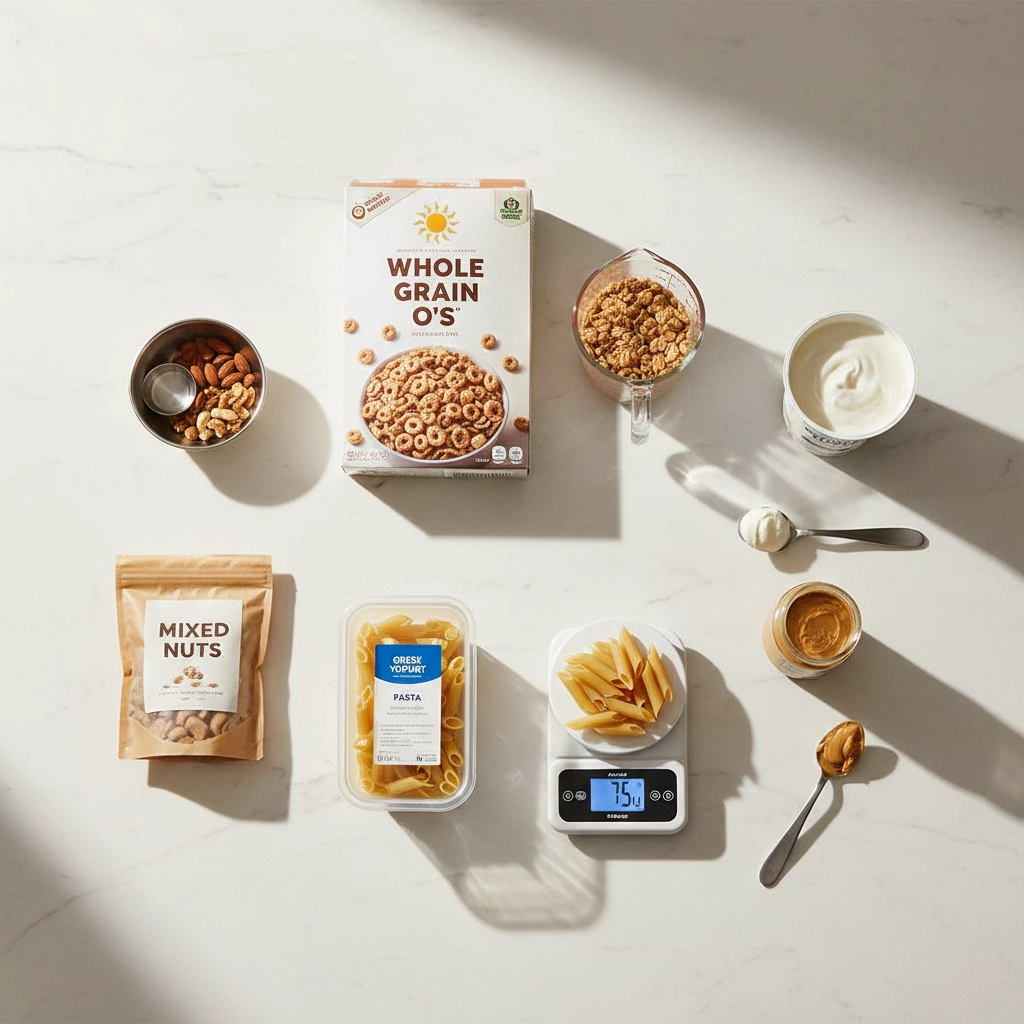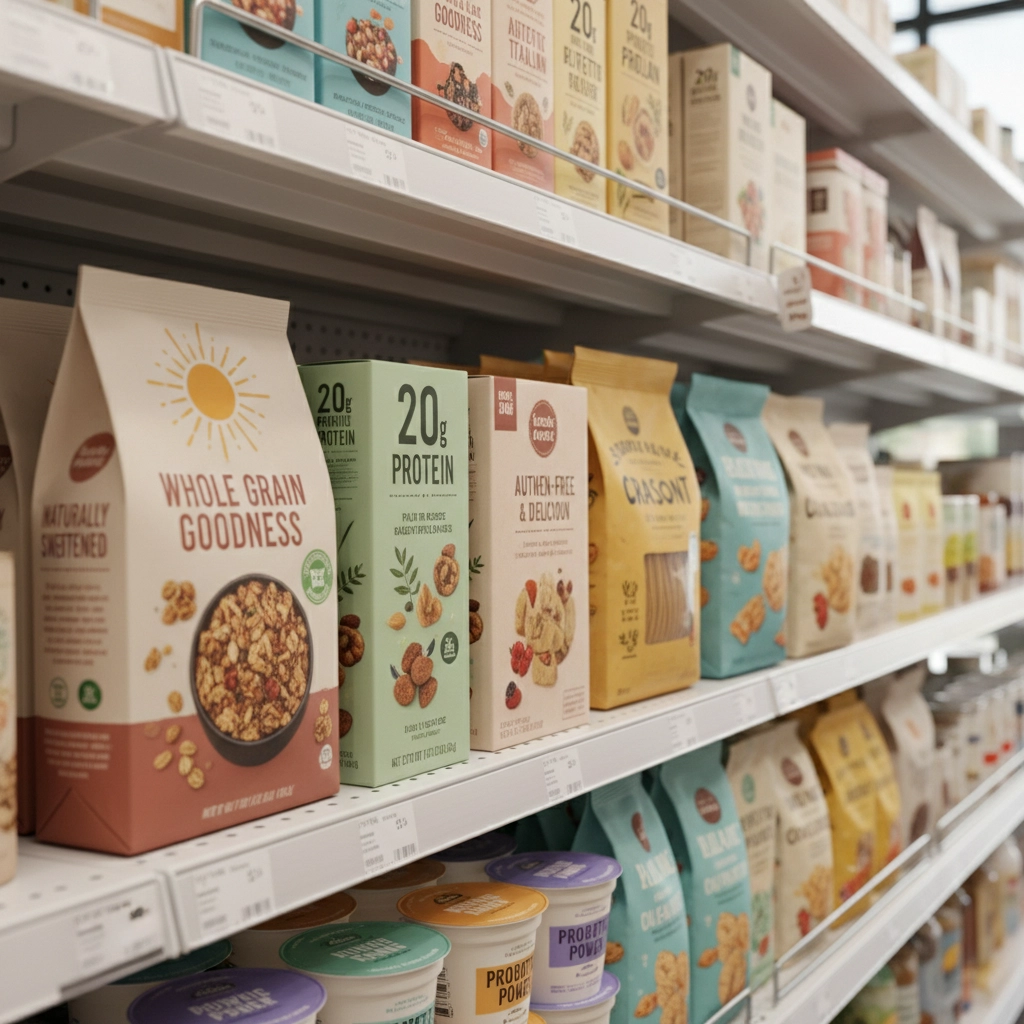What Nutrition Labels Really Mean (And How to Shop Healthier)
- Travis Moore
- Sep 26
- 4 min read
Walking down grocery store aisles can feel overwhelming when faced with countless products making health claims. Understanding nutrition labels is your most powerful tool for making informed food choices that support your health and wellness goals. These standardized labels provide essential information about what you're actually eating, but only if you know how to read them correctly.
Understanding Serving Sizes: The Foundation of Label Reading
The serving size represents the most critical piece of information on any nutrition label. This standardized measurement determines all other values listed on the label, including calories and nutrients. Manufacturers base serving sizes on amounts people typically consume, but these portions may differ significantly from what you actually eat.
When examining serving sizes, compare the listed portion to your actual consumption. If you typically eat two servings worth, you must double every nutrient value shown. This simple step prevents underestimating your actual intake of calories, sugars, and other nutrients.
The number of servings per container tells you how many of these standardized portions the package contains. A product that appears to contain healthy amounts of sugar or sodium may actually provide multiple servings, dramatically increasing your total intake.

Calories and Essential Nutrients: What to Prioritize
Total calories per serving indicate how much energy the food provides. Compare this number to your daily caloric needs and consider how the food fits into your overall eating pattern. Remember that calories from different sources affect your body differently.
Focus on nutrients that require limitation in most diets. Saturated fats should be minimized, as they can contribute to cardiovascular issues. Trans fats should be avoided entirely. Even when labels show "0 g" trans fat, check the ingredient list for "partially hydrogenated oil," which indicates the presence of some trans fat.
Added sugars provide calories without beneficial nutrients. The label distinguishes between total sugars and added sugars, helping you identify products with natural versus artificial sweeteners. Limiting added sugars supports better energy levels and reduces risk of health complications.
Sodium content requires careful monitoring, as excessive intake can impact blood pressure and cardiovascular health. Most processed foods contain significant sodium levels, making label reading essential for managing total daily intake.
Decoding Marketing Claims and Label Terms
Food manufacturers use regulated terms that can mislead without proper understanding. "Free" claims indicate negligible amounts that won't significantly impact your health. "Calorie-free" means five or fewer calories per serving, while "sugar-free" indicates 0.5 grams or less per serving.
"Low" designations vary by nutrient type. Low-calorie foods contain 40 calories or fewer per serving for snacks, or 120 calories or fewer per 100 grams for meals. Low-fat products have 3 grams or less per serving, while low-sodium foods contain 140 milligrams or less.
Source claims help identify beneficial nutrients. "High" indicates 20% or more of the recommended daily value per serving. "Good source" means the product contains 10% to 19% of the daily value. These designations help you identify foods that contribute meaningfully to your nutritional needs.

Utilizing Color-Coded Systems for Quick Decisions
Many packages now feature front-of-pack labels with color-coded systems that provide immediate nutritional guidance. These traffic light approaches use standardized colors to indicate nutritional value at a glance.
Green coding indicates low amounts of fat, saturated fat, sugars, and salt, representing the healthiest choices. These foods can be consumed regularly as part of a balanced diet. Amber coding means medium levels that are acceptable for regular consumption but require moderation.
Red coding signals high amounts of nutrients you should limit. These foods should be consumed in small portions and less frequently. Products with mostly green coding offer the best nutritional value, while any red coding suggests limiting your intake.
This system enables quick comparisons between similar products, helping you make healthier choices without extensive label analysis. When shopping quickly, prioritize products with predominantly green or amber coding.
Strategic Approaches to Healthier Shopping
Compare similar products by examining labels from different brands side by side. Choose options with less saturated fat, added sugars, and sodium when nutritional profiles differ significantly. Front-of-pack labeling makes these comparisons particularly efficient.
Focus on required information that appears on all labels, including total fats, cholesterol, sodium, carbohydrates, dietary fiber, sugars, and protein. These standardized requirements ensure consistent comparisons across products and brands.
Understanding portion reality requires comparing manufacturer serving sizes to your actual consumption. Their portion suggestions may differ from your typical serving, so adjust calculations accordingly to get accurate nutritional information.

Practical Implementation for Daily Shopping
Use reference intakes when available, as these show how much of your daily recommended intake one serving provides. This context helps determine whether a food fits well into your overall daily nutrition goals. Foods providing 20% or more of daily values for beneficial nutrients like fiber or protein offer good nutritional value.
Create a systematic approach to label reading by establishing priorities. Start with serving size, then calories, followed by nutrients you want to limit, and finally nutrients you want to include. This consistent method makes shopping more efficient while ensuring you don't overlook important information.
Develop personal standards based on your health goals. If you're managing sodium intake, establish a maximum per serving that aligns with your daily targets. For weight management, set calorie guidelines that support your goals while providing adequate nutrition.
Building Long-Term Healthy Shopping Habits
Regular label reading becomes faster and more intuitive with practice. Start by focusing on products you buy frequently, learning their nutritional profiles and comparing alternatives. This knowledge base helps you make quicker decisions during future shopping trips.
Keep a running mental list of products that meet your nutritional standards. When you find foods with excellent nutritional profiles, note the brand and specific product details for future reference. This approach reduces decision time while maintaining nutritional quality.
Consider planning meals around nutritionally dense foods you've identified through label reading. This strategy ensures your shopping supports your health goals while reducing the temptation to purchase less healthy options.
Stay informed about labeling updates and new products that meet your standards. Manufacturers frequently reformulate products or introduce new options that may better align with your nutritional goals. Regular label checking helps you discover these improvements.
The key to healthier shopping lies in consistent label evaluation, understanding practical implications of nutritional information, and developing efficient comparison strategies. Focus primarily on limiting harmful nutrients while ensuring adequate intake of beneficial ones, using both detailed nutrition facts and simplified front-of-pack systems to guide your purchasing decisions.
By implementing these label-reading strategies systematically, you transform grocery shopping from a potentially overwhelming experience into an opportunity to actively support your health and wellness goals through informed food choices.
Comments